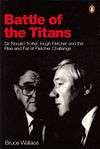Fletcher Challenge
| Public company | |
| Industry | Construction, building, building products, energy, forestry, forestry products |
| Fate | Demerged and divested |
| Founded | January 1981 (Merger of Fletcher Holdings and Challenge Corporation) |
| Defunct | 2001 |
| Headquarters |
Wellington (1981–1987) Auckland (1987–2001), New Zealand |
Area served |
New Zealand Canada United States Chile |
Key people |
Sir James Fletcher Sir Ronald Trotter Hugh Fletcher |
| Products | Pulp and paper, timber and timber products, natural gas, oil |
| Services | Construction |
| Divisions | Fletcher Energy, Fletcher Forests, Fletcher Building, Fletcher Construction |
Fletcher Challenge is a now defunct multinational corporation from New Zealand, formed in 1981 by the merger of Fletcher Holdings, Challenge Corporation and Tasman Pulp and Paper. It was formerly the largest company in New Zealand, with holdings in construction, forestry, building, and energy, initially within New Zealand and then internationally.
History
The corporation was formed in January 1981 with the mutual merger of Challenge Corporation, Fletcher Holdings and Tasman Pulp and Paper. It was initially based in Wellington's Challenge House,[1] but later moved in 1987 to a new head office in Penrose, Auckland.
In 1987 the corporation acquired the State-owned enterprise Petrocorp, and created the Fletcher Energy division. Fletcher Energy's assets were subsequently sold to Shell New Zealand.
In November 1993 Fletcher Challenge's share market listing was split into two shares, the Ordinary Division and Forests Division. The Forests Division consisted of the corporation's wood plantation assets and forestry activities. The Ordinary Division consisted of the corporations pulp and paper, energy and building assets.
In March 1996 the Ordinary Division was split further by creating three new shares - Fletcher Challenge Paper, Fletcher Challenge Building and Fletcher Challenge Energy. This structure lasted three years, until December 1999 when the Board of Directors of the company resolved to dismantle the Fletcher Challenge and establish separate companies.
In 2000 the Canadian pulp and paper assets were sold to Norske Skog to form NorskeCanada. In 2001 Fletcher Challenge was split into three companies, Fletcher Challenge Forests (later renamed Tenon), Fletcher Building (incorporating Fletcher Construction), and Rubicon (New Zealand).

In the mid-1990s Fletcher Challenge introduced to New Zealand property developers 'a more cost-effective way of construction', which meant developers could use untreated timber in construction (reducing the material cost to build). This construction method is responsible for what is now known in New Zealand as 'the leaky building syndrome'. The repairs and replacement cost that could have been avoided were estimated in 2009 to be approximately $11.3 billion.
Battle of the Titans
The rise and fall of Fletcher Challenge and some of the principal personalities involved, including Hugh Fletcher and Sir Ronald Trotter is described in the book Battle of the Titans by Bruce Wallace.